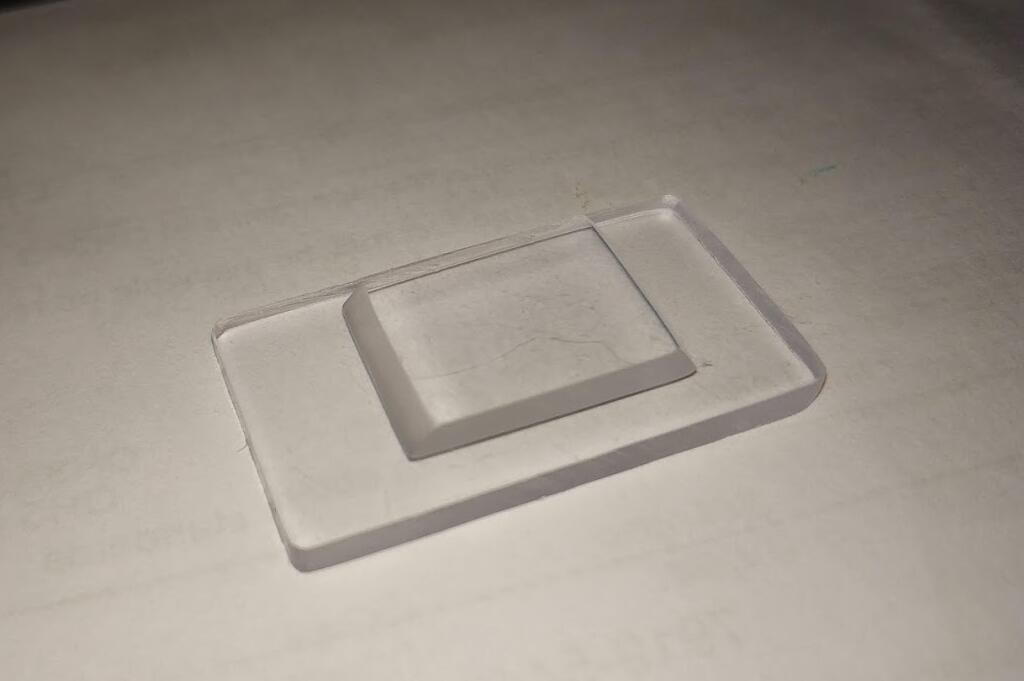This document records the development of the optical rain sensor on QingStation.
Here we are building a Infrared Optical Rain Sensor, which is common in today's car automotive windshield wiper. The below diagram from wiki shows the principle of these type of rain sensor.
When the glass is dry, the IR travels through will be totally reflected between top and bottom of the 2 pieces of glasses.
When there are rain drops on the glass, the IR light will not be totally reflected, so the light intensity will decrease.
We can then use a photodiode to measure the intensity of light to read the rain.
There a few strategies can convert the measurement to rain level.
- Count how many drops (changes of measurement) in a time period.
- Calculate the variance of continuous measurement.
Since our sensor is small, it is expected that the "accuracy" will be low especially in small rain.
The optical lens is the most difficult part for the rain sensor. I did not even try to use real glasses. The materials I selected is polycarbonate (PC), a clear and UV resistance plastic materials. It has better physical mechanical properties than acrylic, but only a bit more expensive.
The optical part is consist of 2 pieces of PC sheet glued together.
The top one is flat with right angle on all the side.
The bottom one is smaller with 2 short sides in a 45 degree angle.
2 PC sheets are glued together by clear epoxy.
There are a few bubbles in between the glued surfaces, because of a mistake during the epoxy curing. The epoxy I brought was a very low viscosity, and it take ages to cure (~2days). So I add a little bit of heat to it (placed it on top of my PC's power unit.) When I check it a few hours later, the bubbles appeared.
Anyway, as long as it works, that is fine.
Measure schematic is shown below.

As you can see, it is very simple. A infrared LED driver and a photodiode receiver.

A typical photodiode (e.g. PD204) has a reverse current at around 5~15uA.
So a serial 100k resistor is capable to provide 0.5~1.5V dynamic ranges for ADC to measure.
There is also a buffer capacitor for ADC to provide more stable voltage measurement.
After assembly and testing, with this setup, a 3ms short pulse is enough for producing a stable voltage.
With a 5ms LED pulse, the ADC measurement are around 1000 in indoor.
However, when outdoor with good sunlight, the measurement can go all the way up to 4000, already close the the maximum range 4095.
I think it is better to change the resistor to 47k to compensate the sunlight effect with this unnamed F3 diode.
Apparently, the diode I used has larger reverse current than the one I shown above.
Later I changed it back to PD204/B
I set the measurement frequency to 10 times per second, and use 10 seconds windows to calculate the variance.
Since there is no a physical unit so I use the raw ADC data to calculate the variance.
That is, the variance is based on 100 ADC samples.
I tried to use shower to figure out the variance ranges in different rain levels.
The variance dose increase as more droplets lands one the sensor.
The range I summarized is here:
- Light rain:
>15 - Moderate rain:
>70 - Heavy rain:
>200 - Violent rain:
>500
Very luckily, there a rain is coming in the night of the calibration.
The QingStation stay in balcony for the whole night. Battery and charger are sealed in a zip bag.
The data of the overnight measurement is shown below.

I only able to capture the raining in final bit (near noon time).
When the middle 2 peaks are measured, I didn't wake up.
The battery ran out in the afternoon since there is no enough direct sunlight.
A few findings here:
- The sunlight has some affect to the variance.
- The calibration seems working well.
10~70corresponds the light rain which is same as I observed. - The measuring area is small, so it need a longer period for a droplet to land near it.
- This device cannot measure rainfall in mm, since it cannot detect the size of the droplet only the frequency.








